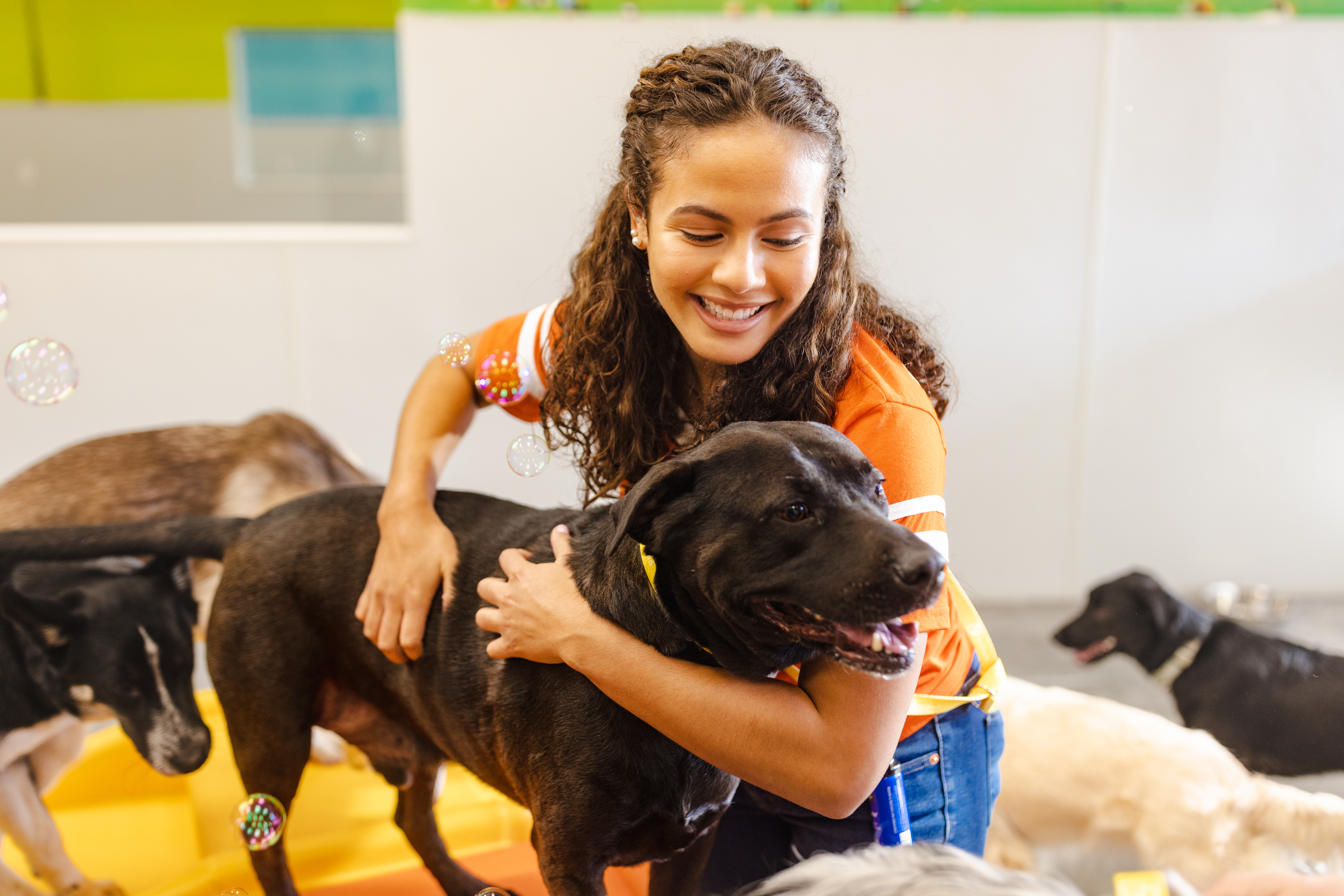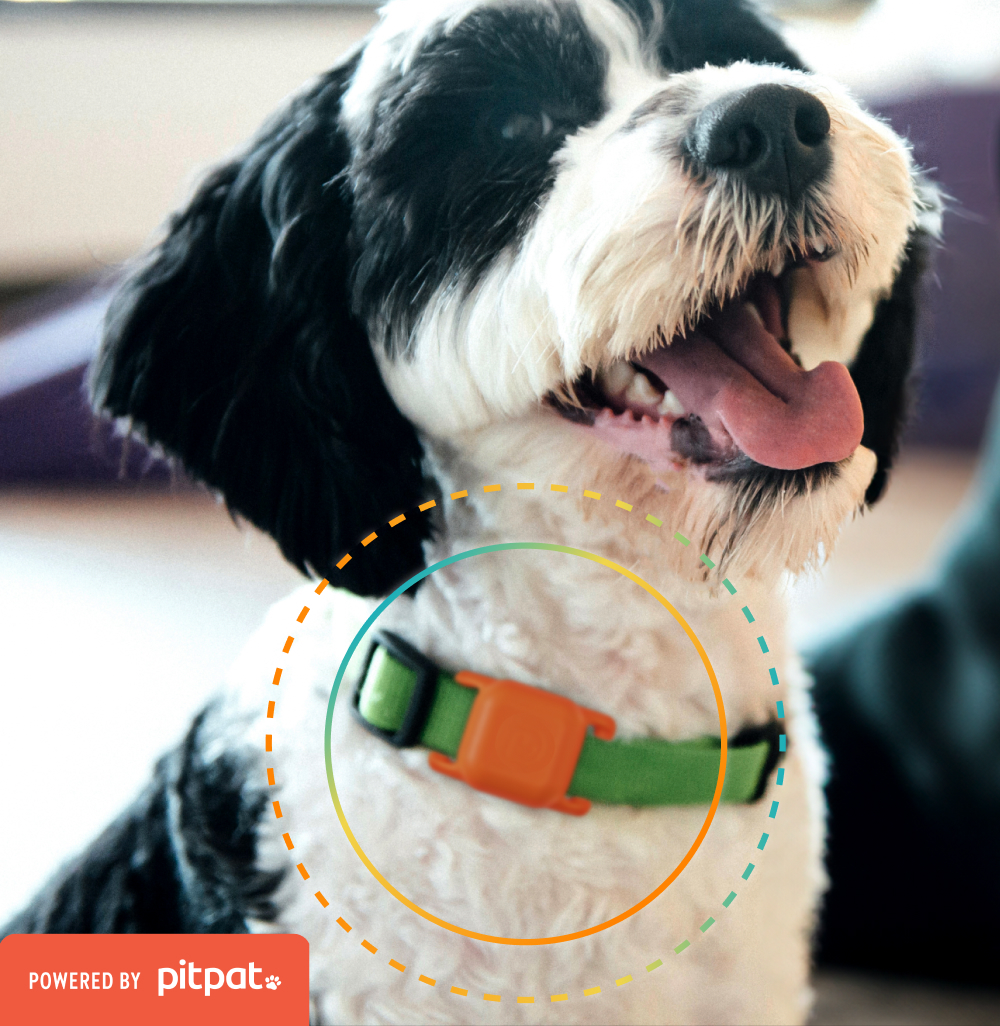Reading Your Dog’s Body Language

Let’s be honest: everyone wishes they could communicate with their dog. Unfortunately, it is not as easy as it sounds. However, there are ways for us as pet parents to understand what our dogs are thinking or even feeling. Your dog’s body language is key to understanding your dog’s behavior and will also strengthen the bond between you and your pup.
Here are a few ways to effectively read your dog’s body language to better understand him or her:
Tail
From high in the sky to low on the ground, pet parents can learn about their dog’s current behavior from the position and movement of their tail.
Happy tail: When a dog is happy, their tail will be held in a slightly upright position with a steady wag.
Curious tail: A dog may be curious or interested in investigating a new situation if their tail is held straight out in a horizontal position.
Agitated or prepared tail: Your dog is alert when they stand strong with their tail up and their ears raised. Their posture explains they are prepared to encounter whatever has caught their interest.
Aggressive tail: If a dog moves their tail from a relaxed position to a strong vertical position, they may be feeling stress or aggression. The higher the tail, the more cautious one should be when attempting to approach the dog.
Submissive tail: Once a dog’s tail moves from the neutral position to a lower position, the dog is nonthreatening and submissive. If a dog’s tail moves from the lower position to between their legs, it may indicate a dog perceives they are a threat and is showing they are nonthreatening and not to be harmed.
Eyes
It has been commonly said that eyes speak all the words a mouth cannot, which is also true for dogs! With one look at your dog’s eyes, you can tell their current mood or how they are feeling. Your dog’s eyes will look average in size and shape if they are happy, relaxed, and at ease. Widened, enlarged eyes are an indicator of stress or fright. Lastly, if you notice your pup’s eyes have narrowed, appear smaller than normal, or look as though they are squinting, this is a sign your pup is feeling aggressive. This may also be an indicator of a pup who has fallen ill.
Ears
Every breed of dog has a distinct size, shape, and style of ears. The one thing in common between all dogs and their ears is their position when experiencing a newly onset emotion or feeling.
A relaxed dog will allow their ears to fall normally. If a dog hears a new sound or is experiencing something for the first time, their ears will look as though they are positioned forward and high on their head. These two ear positions can sometimes be hard to decipher, but the more time you spend with your dog, the easier it will be to tell the difference between happy ears and inquisitive ears.
During a storm, you may notice your dog’s ears will lie flat on their head. This is a sign of fright. When something startles or puts your dog in a vulnerable position, their ears will respond accordingly by flattening until they feel at ease.
Mouth
Although we cannot speak directly to our furry family members with words, paying attention to the way a dog displays their teeth, jaw, and tongue will speak volumes.
When dogs are happy, they show it! Their mouths may be closed or slightly open. An extra happy pup may allow their tongue to hang out – usually accompanied by a wagging tail and other signs of calm body language. Dogs who are experiencing extra amounts of happiness may also display a distinct smile. These moments make the best “Instagrammable” photos!
Dogs can also effectively communicate feelings of aggression and protectiveness through their mouth. When their lips are pulled back to display their teeth with a wrinkled muzzle, the dog is indicating everyone should keep their distance and may attempt to bite if approached.
Posture
A dog’s posture is one of the simpler methods to easily comprehend your dog’s mood and behavior. Dogs may try to make themselves look bigger or smaller, in addition to other posture modifications, to effectively communicate their mood.
Usually, a relaxed and happy dog will exhibit a normal, casual body posture. This will include jumping, pouncing, or eager behavioral signs. When a dog feels anxious or nervous, they may attempt to make themselves as small as possible. If your dog is experiencing a low head, ears pushed back, and their tail tucked low or between their legs all while lowering themselves closer to the ground, your dog may be feeling anxious, nervous, or scared. Note: your dog may display similar body language if they are attempting to be submissive and not be mistaken as a threat.
Angry and assertive dogs will attempt to assert their dominance over another dog or situation. These dogs will hold their head and chest high and attempt to make themselves as tall as possible with a slightly forward leaning stance.
Most importantly, all pet parents must remember dogs are not identical in personality. The above postures will usually signify the related attributes; however, some dogs tend to display emotions and feelings in a unique way. This is one of the main reasons why interpreting a dog’s behavior can be difficult, but with time, pet parents will learn their dog’s language and provide them with exactly what they need to be a happy and content canine citizen.
Learning About Your Dog
Guidance from those who spend every day with a variety of different dogs will allow you to learn how your dog reacts best in different stressful situations. At Dogtopia, all Canine Coaches are trained and willing to answer all questions you may have about your dog, their day of play, or how they react around others. Interested in learning more about your dog with a day of Dogtopia daycare? Book a Meet & Greet today to learn more about your pup while allowing them to become the best version of themselves through dog daycare at Dogtopia!












